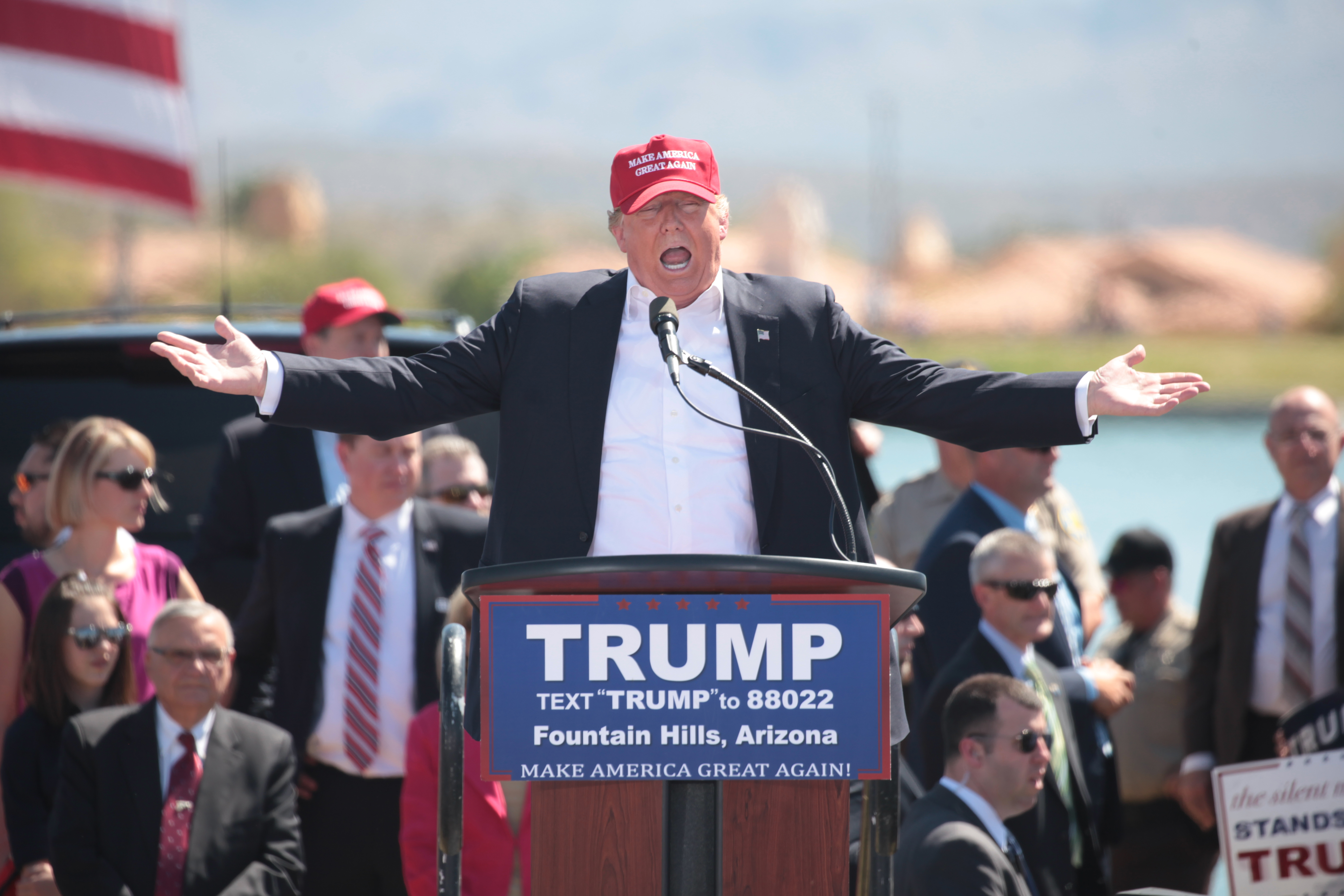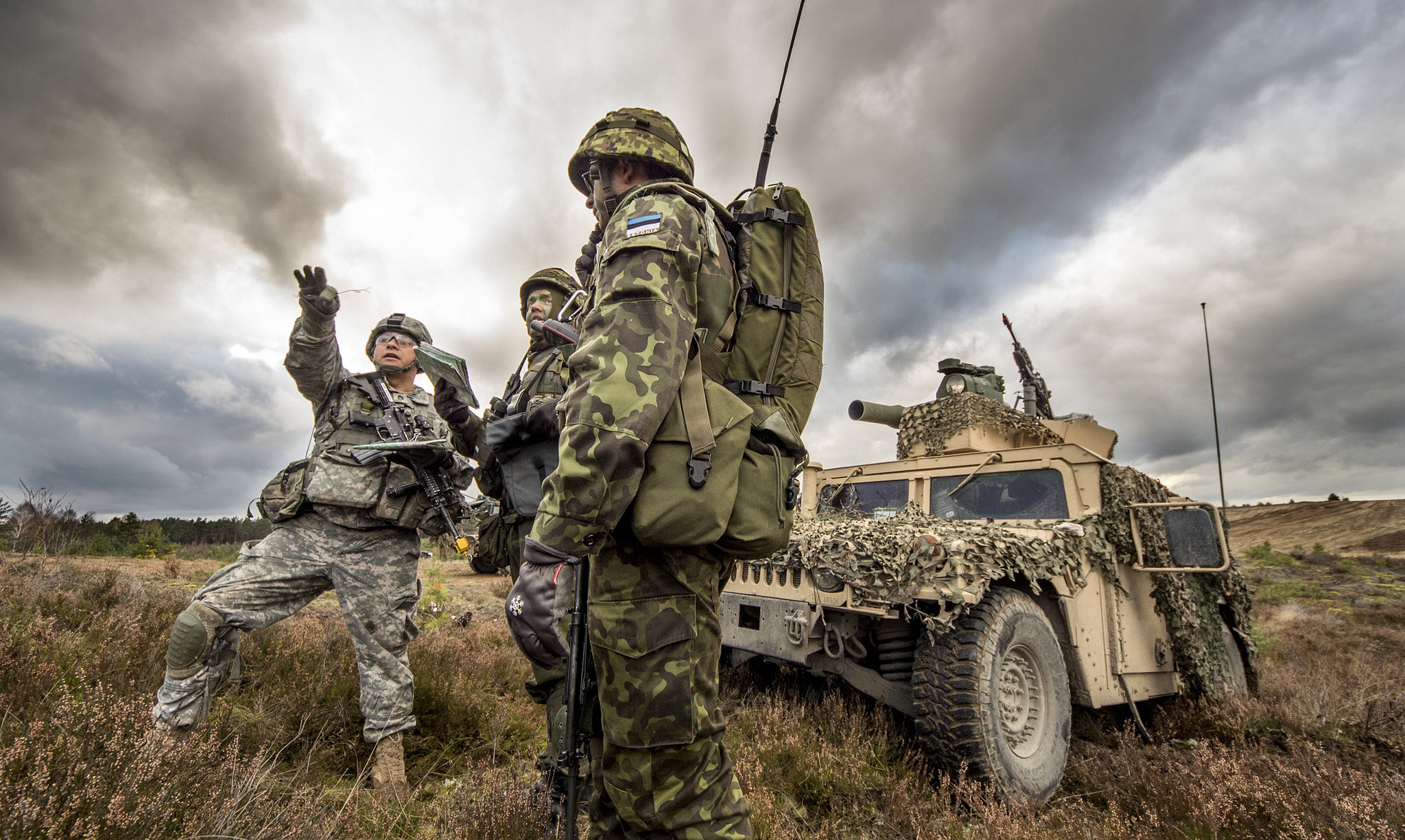By Thomas Zeitzoff.
“The Fake News hates me saying that they are the Enemy of the People only because they know it’s TRUE. I am providing a great service by explaining this to the American People. They purposely cause great division & distrust. They can also cause War! They are very dangerous & sick!”- Donald J. Trump (@realDonaldTrump), August 5, 2018
One of the consistent headlines of the Trump campaign and presidency has been his use of violent rhetoric, most notably repeatedly calling journalists “enemy of the people ” at his rallies and via social media. The targets of his ire have been varied—he has advocated roughing up protestors, retweeted an animation of him hitting Hillary Clinton with a golf ball, and referred to illegal immigrants as “animals” and an “infestation.”
President Trump is not alone in embracing extreme language to describe his perceived adversaries. At a speech in 2017 commemorating the failed Turkish coup, Turkish President Recep Tayyip Erdogan said, “We will rip off the heads of those traitors [coup plotters and their allies].” Philippine President Rodrigo Duterte—in his final campaign rally—was quoted saying, “Forget the laws on human rights. If I make it to the presidential palace, I will do just what I did as mayor. You drug pushers, hold-up men and do-nothings, you better go out. Because I’d kill you…I’ll dump all of you into Manila Bay, and fatten all the fish there.”
So why do politicians use violent rhetoric, and what happens when they use it? Violent political rhetoric can be explicit, such as a politician calling for individuals or groups to be locked up, beaten up, or even killed. Yet many times it is implicit, drawing on metaphors to disparage and dehumanize targeted groups or individuals by calling them cockroaches, rats, animals, or a cancer. By framing the context in terms of an infestation or health concern, those labeled can be eradicated, put down, cut out, or removed to keep the body politic “healthy.” Even referring to political rivals or the press as an “enemy of the people” sets up the logic that they are not to be bargained with, but rather treated as a threat to be eliminated.
The targets of rhetoric also vary. Many times politicians verbally attack marginalized groups, such as the Ahmadi Muslims in Pakistan, the Roma in Europe, or LGBT individuals. In addition to political opponents, journalists, civil society groups that monitor political corruption and encourage free expression, as well as institutions such as the judiciary are all common rhetorical targets.
The conventional wisdom is that politicians use violent rhetoric to polarize society and thereby pave the way for further violence that is politically beneficial to them. In a classic “power politics” perspective, violent rhetoric mobilizes supporters—and marginalizes rivals—to the benefit of the politician. Conventional wisdom would seem to support this view. The use of even ‘mild’ violent political metaphors increases support for subsequent violence, and scholars have shown that individuals that hold explicitly dehumanized views — such as viewing minority groups like Muslims or immigrants as less human — are more likely to support aggressive actions such as torture of dehumanized groups.
As a result, it’s not surprising that scholars and civil society view violent rhetoric with considerable alarm. It tends to accompany outbreaks of ethnic violence, targeted violence and assassination, or even portend the breakdown of democracy. Many NGOs and policymakers see violent rhetoric and hate speech as a bellwether for and direct cause of political violence.
The problem with this understanding is that it’s incomplete. Violent political rhetoric tends to happen in violent and polarized contexts. For instance, the outbreak of nationalistic rhetoric of Serbs, Croats, and Bosniak politicians in the Balkans during the early 1990s occurred against the uncertainty and instability of the collapse of Yugoslavia. The beating of abolitionist Rep. Charles Sumner (MA-R) in 1856 in the US House of Representatives by Rep Preston Brooks (SC-D) was in response to a perceived offensive speech that Sumner made about slaveholders, including Brooks’ relative. Yet the speech occurred during polarization and violent confrontation between pro- and anti-slavery forces in Kansas. Finally, the 2016 US the election of Trump coincides with increasing partisan polarization, and ideological sorting between liberals and conservatives.
It’s hard to disentangle how much of the violent rhetoric is a contributing factor to—or simply a side effect of—violence.
There’s a tendency to link violent rhetoric to actual violence, and ignore or downplay other factors. What about the less memorable instances where violent and incendiary rhetoric fell flat and did not have the desired effect, such as when Louisiana voters rejected former KKK Grand Wizard David Duke and his bid for governorship? It’s unclear how much (violent) rhetoric persuades and changes people’s viewpoint, versus serves as a signal that their private beliefs are more acceptable to act upon.
So the key question is what purpose does violent rhetoric serve? First, it can serve as a trial balloon for the acceptability of different messages. It allows politicians to see if certain policies or targets of violence are likely to engender large pushback or not. Many argue that this was precisely the point of Trump’s first travel ban.
Second, violent rhetoric can disengage the electorate, preventing groups from mobilizing and forming alliances. Politicians may work to ensure that ethnicity or religion is the dominant axis of political competition and prevent alliances between poor people of different ethnic groups to challenge the wealthy. In the Jim Crow South, white elites used racial appeals to prevent poor Whites and Blacks from pushing for labor reforms and redistribution.
Finally, violent political rhetoric may simply be a way to signal to ingroup members to coordinate on a strategy, and screen pretenders from true-believers. Evidence from propaganda and even outbreaks of genocide suggests that repeating such rhetoric, even when it’s blatantly false, may be a way for individuals to show their loyalty to the regime, or can serve as a mobilization signal to carry out violence.
So how do we make sense of Trump’s extreme language towards the press (“enemy of the people”) or immigrants (‘animals”), and what are its effects? The conventional wisdom is that Trump is using the bully pulpit to discredit journalists who criticize his administration and to demonize immigrants in the eyes of his supporters in an effort to sell his immigration plan. Yet, this is only half the story. The missing piece is how the media, and even more crucially Republican elites, respond? Do they stay silent? Do they support his rhetoric? Or do they criticize it?
And this is the paradox of violent rhetoric. The rhetoric itself matters, but many times the response of elites to the rhetoric matters more than the words themselves. Much of the public follows politics in a limited way, and they look to ingroup partisans and the media for cues on the issues. Trump supporters use cues from Fox News and Republican leaders to evaluate whether or not something Trump said or did crossed a line of acceptable discourse. Extreme language also allows Trump to gauge the loyalty of his supporters, hence his famous quote during a campaign rally in 2016: “I could stand in the middle of 5th Avenue and shoot somebody and I wouldn’t lose voters.” This speaks to both the loyalty of his followers, but also—by making such a statement and not facing a strong rebuke from Republican elites—it showed Trump that he was unlikely to face an intraparty challenge from other Republicans. This is the key point: violent rhetoric matters more as a way to signal and gauge “who’s with us, and who’s against us?” and less as a persuading mechanism.
Expecting any kind of large pushback by Republican leaders against Trump’s rhetoric towards immigrants, journalists, or Democrats is unlikely with the 2018 midterm elections looming. In fact, there’s strong evidence from around the world that elections exacerbate violent rhetoric, partisan animosity, and outright violence. Yet continuing to point out inflammatory language and enforce norms of discourse— what’s acceptable and what’s not—is crucial to stemming the negative effects of violent rhetoric.
Thomas Zeitzoff is an assistant professor in the School of Public Affairs at American University.







2 comments
The promotion of violent / inflammatory / extremist rhetoric is also tied into the modern 24 hour news cycle and the short-attention-span of the twitter era. Media companies are not charities after all, their owners have a right to make money. In the long run, giving that profit motive space to develop without interference is the best way to achieve the public good. Or so we think.
On a more meta-level, the same media companies can prime their audiences for future profit generation, by training audiences to shun long-form communication, and consume more of the bite-sized snacks of the information age. One can’t help but ask if that habit would predispose audiences to favor short extreme statements, and the simplest possible ideas of “what’s wrong with society”.
That something is wrong is now firmly established, across left right and center. Where it goes from here is still up in the air.
Thank you for writing this piece. History has taught us that we cannot ignore the role strategic rhetoric and propaganda has on divid(ed)(ing) societies. Your reference to the Rwandan Genocide particularly struck me, as it is a prime example regarding the impacts of language wielded as a political weapon. I do believe in the resilience we have as humans, but I am not ignorant of our susceptibility to environmental influence. In fact, our resilience has stemmed in part from this malleability- it has preserved us just as it betrays us. I have not read much scintific literature on the matter (I intend to remedy this), but I expect that implicit messages would have a larger impact on our behavior and beliefs than those less cloaked in their intent. Language can isolate and divide, and in the spaces and walls created between us it becomes easy to dehumanize the Other.
In peace,
Allyshia